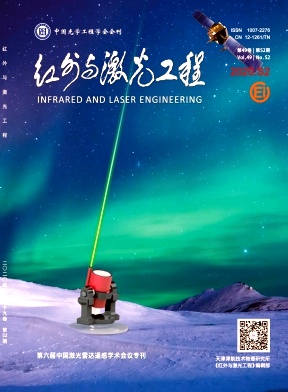光子探测距离漂移误差与大气湍流效应建模分析
[1] Pawlikowska A M, Halimi A, Lamb R A, et al. Single-photon three-dimensional imaging at up to 10 kilometers range[J]. Optics Express, 2017, 25(10): 11919-11931.
[4] Barton-GrimleyR A, ThayerJ P, HaymanM. Nonlinear target count rate estimation in single-photon Lidar due to first photon bias [J]. Optics Letter, 2019, 44(5): 1249-1252.
[5] Oh M S, Kong H J, Kim T H, et al. Reduction of range walk error in direct detection laser radar using a Geiger mode avalanche photodiode[J]. Optics Communications, 2010, 283(2): 304-308.
[6] Huang Ke, Li Song, Ma Yue, et al. Detection probability model of single-photon laser altimetry and its range accuracy [J]. Chinese Journal of Lasers, 2016, 43(11): 235-240. (in Chinese)
[7] Huang Ke, Li Song, Ma Yue, et al. Theoretical model and correction method of range walk error for single-photon laser ranging [J]. Acta Physica Sinica, 2018, 67(6): 141-151.(in Chinese)
[8] Chen Z, Li X, Li X, et al. A correction method for range walk error in time-correlated single-photon counting using photomultiplier tube[J]. Optics Communications, 2019, 434:7-11.
[9] Xu L, Zhang Y, Zhang Y, et al. Restraint of range walk error in a Geiger-mode avalanche photodiode Lidar to acquire high-precision depth and intensity information[J]. Applied Optics, 2016, 55(7): 1683-1687.
[10] Xu L, Zhang Y, Zhang Y, et al. Signal restoration method for restraining the range walk error of Geiger-mode avalanche photodiode lidar in acquiring a merged three-dimensional image[J]. Applied Optics, 2017, 56(11): 3059-3063.
[11] Young C Y, Andrews L C, Ishimaru A. Time-of-arrival fluctuations of a space-time gaussian pulse in weak optical turbulence: an analytic solution[J]. Applied Optics, 1998, 37(33): 7655-7660.
[12] Milonni P W, Carter J H, Peterson C G, et al. Effects of propagation through atmospheric turbulence on photon statistics [J]. Journal of Optics B: Quantum and Semi-classical Optics, 2004, 6(8): S742-S745.
[13] Lars Sj?觟qvist, Christina Gr?觟nwall, Markus Henriksson, et al. Atmospheric turbulence effects in single-photon counting time-of-flight range profiling[C]//Proceedings of SPIE, 2008, 7115: 71150G.
[14] Mosavi N, Nelson C, Marks B S, et al. Aberrated beam propagation throughturbulence and comparison of Monte Carlo simulations to field test measurements [J]. Optical Engineering, 2014, 53(8): 086108.
[15] Qun H, Yang C, Jie C, et al. Analytical and numerical approaches to study echo laser pulse profile affected by target and atmospheric turbulence[J]. Optics Express, 2016, 24(22): 25026-25042.
[16] Luo Hanjun, Ouyang Zhengbiao, Liu Qiang, et al. Research on influence of atmospheric turbulence on range accuracy of Gm-APD laser ranging system [J]. Laser and Infrared, 2018, 48(5): 605-610. (in Chinese)
[17] Rao Ruizhong. Light Propagation in Turbulent Atmosphere [M]. Heifei: Anhui Science and Technology Press, 2005. (in Chinese)
[18] Schmidt J D. Numerical Simulation of Optical Wave Propagation: With Examples in MATLAB [M]. Washington: SPIE Press, 2010: 149-182.
[19] Fouche D G. Detection and false-alarm probabilities for laser radars that use Geiger-mode detectors[J]. Applied Optics, 2003, 42(27): 5388-5398.
[20] Li Zhijian, Lai Jiancheng, Wang Chunyong, et al. Influence of dead-time on detection efficiency and range performance of photon-counting laser radar that uses a Geiger-mode avalanche photodiode [J]. Applied Optics, 2017, 56: 6680-6687.
[21] Vojnovic B. Advanced time-correlated single photon counting techniques [J]. Journal of Micrographics, 2006, 222(1): 65-66.
侯阿慧, 胡以华, 赵楠翔, 董骁, 曾祥熙. 光子探测距离漂移误差与大气湍流效应建模分析[J]. 红外与激光工程, 2020, 49(S2): 20200192. Hou Ahui, Hu Yihua, Zhao Nanxiang, Dong Xiao, Zeng Xiangxi. Modeling and analysis of range walk error of photon detection affected by atmospheric turbulence[J]. Infrared and Laser Engineering, 2020, 49(S2): 20200192.



